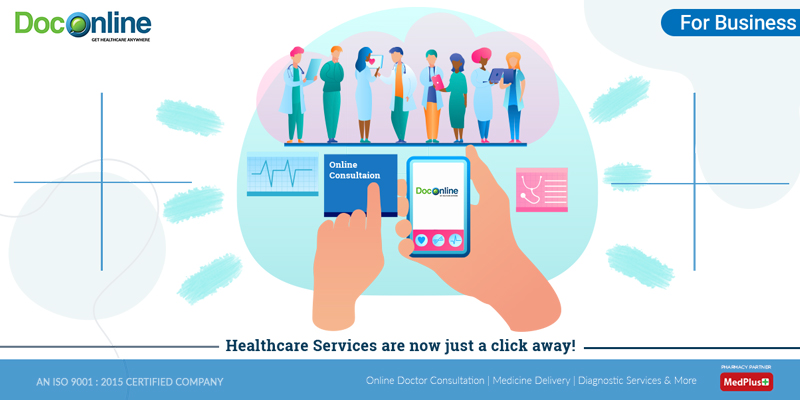How Subscription Based Healthcare is Changing Patient Accessibility to Services
How Subscription Based Healthcare is Changing Patient Accessibility to Services
Blog Article
The Surge of Subscription-Based Healthcare and Its Effect on Patient Care
As healthcare evolves, the subscription-based model is gaining traction, promising to change individual treatment by offering predictability and ease of access. These models, which bypass standard insurance coverage, could redefine the patient-doctor dynamic, stressing customized and preventive treatment. Yet, as with any kind of development, they provide challenges, particularly concerning fair gain access to for all socioeconomic teams. The capacity for these designs to reshape healthcare delivery elevates pushing concerns concerning their long-term sustainability and inclusivity. Are these subscription services the future of medical care, or do they run the risk of leaving susceptible populaces behind? The complexities of this shift warrant a closer exam.
Recognizing Registration Health Care Versions
Understanding the concept of membership health care designs involves analyzing a transformative technique to medical solutions that emphasizes price and accessibility. These models, typically described as direct health care (DPC) or attendant medicine, have actually arised as ingenious alternatives to standard fee-for-service healthcare systems. Subscription healthcare allows patients to pay a set month-to-month or annual fee for a defined collection of clinical services, which may consist of unlimited office sees, regular exams, and standard laboratory examinations, without the demand for typical insurance coverage billing.
The framework of membership health care designs is created to streamline patient treatment by removing third-party payers and complicated payment codes, consequently lowering administrative problems. Doctor can concentrate extra on patient treatment, promoting stronger patient-provider connections. This version likewise promotes preventative treatment by encouraging routine sees, as the economic obstacle of per-visit fees is gotten rid of.
The subscription version usually equips doctor to handle smaller individual panels, permitting even more personalized care. It lines up monetary incentives with patient wellness outcomes, as companies are motivated to keep person complete satisfaction and well-being. In general, comprehending subscription medical care designs requires acknowledging their possible to improve how care is provided and accessed.
Benefits for Individuals and Companies

With a stable revenue stream, healthcare experts can commit even more time to each client, leading to a more customized and comprehensive care experience. The focus on preventative care within registration plans can lead to far better client results and lowered long-term health care costs.
Obstacles and Problems
While subscription-based health care models present countless advantages, they likewise come with a collection of difficulties and concerns that should be dealt with. Initially, accessibility continues to be a substantial problem, as these models often target individuals that can afford month-to-month fees, possibly leaving out low-income populations. This raises moral concerns about fair access to medical care services. In browse around these guys addition, the diverse nature of subscription plans can result in complication amongst individuals concerning protection specifics, possibly causing unmet assumptions or inadequate treatment.
Financial sustainability of subscription-based models is an additional issue. Providers should stabilize the fixed earnings from memberships with the variable costs of healthcare services, which might rise and fall because of unanticipated medical demands. This can develop stress to restrict services or boost fees, potentially affecting person fulfillment and care quality.
In addition, regulatory oversight of subscription-based healthcare designs is still progressing. The lack of standardized structures can cause inconsistent service quality and accountability, complicating initiatives to ensure individual protection. The combination of innovation-- usually a foundation of these designs-- increases concerns regarding data privacy and security, as sensitive client information could be at risk to breaches. Addressing these challenges is vital for the successful and fair application of subscription-based medical care.
Influence on Patient-Doctor Relationships
One considerable influence of subscription-based medical care versions on patient-doctor partnerships is the possibility for boosted connection and individualized treatment. By embracing a subscription model, physicians can handle a smaller client panel, permitting more devoted time with each individual. This boosted accessibility cultivates a much deeper understanding of an individual's medical history, way of life, and choices, making it possible for extra tailored treatment plans and interventions.

Nonetheless, it is crucial to identify that while subscription-based versions might profit those that can afford them, they might inadvertently widen health care variations. Individuals who are incapable to participate in these models may experience decreased access to personalized care, potentially influencing their partnerships with healthcare carriers. Thus, while the registration model offers encouraging advantages for patient-doctor why not try this out partnerships, it also positions difficulties that require to be addressed to guarantee fair medical care access.
Future of Healthcare Accessibility

The duty of technology can not be neglected in this makeover. Telemedicine systems and electronic health documents assist in smooth interaction between patients and health care providers, breaking down geographical and logistical obstacles. Furthermore, developments in man-made intelligence and information analytics can even more customize treatment by anticipating person demands and enhancing treatment strategies.
However, the future of health care gain access to additionally presents obstacles, such as making sure equity throughout various socio-economic teams. Policymakers and medical care companies should work together to bridge the digital divide, ensuring that subscription-based versions continue to be comprehensive and affordable. As these systems develop, they hold the promise site link of making medical care extra accessible, effective, and patient-centric.
Verdict
Subscription-based healthcare designs are improving person care by providing a stable expense framework and enhancing access. These designs strengthen patient-provider relationships via customized care and regular brows through, stressing preventative wellness. Despite these advantages, difficulties such as ease of access concerns for low-income populations and the demand for fair healthcare services persist. The surge of subscription-based medical care encourages aggressive patient involvement, which has the possible to improve individual end results and contentment, indicating a transformative change in healthcare delivery.
As healthcare evolves, the subscription-based design is acquiring traction, guaranteeing to change person care by providing predictability and ease of access.Subscription-based medical care versions offer distinct advantages for both providers and individuals, enhancing the general health care experience.As medical care systems progress, the future of health care gain access to frequently hinges on the assimilation of cutting-edge versions and innovations.Subscription-based healthcare versions are improving individual care by giving a steady cost structure and boosting accessibility. The increase of subscription-based health care encourages positive patient engagement, which has the possible to improve person results and fulfillment, indicating a transformative shift in medical care delivery.
Report this page